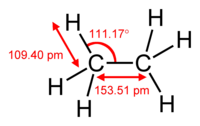
Photo from wikipedia
Abstract Although the connection between plastics and fracking may seem obscure, ethane, a gas liquid produced through natural gas fracking, is currently stimulating increases in world plastics production. The result… Click to show full abstract
Abstract Although the connection between plastics and fracking may seem obscure, ethane, a gas liquid produced through natural gas fracking, is currently stimulating increases in world plastics production. The result is likely to be an increase in the amount of plastic garbage, which ultimately is liable to contribute to pollution of the world's oceans with plastic wastes and fuels concern over the impacts of plastic pollution on ecosystems and human health. Here, I examine the regulation of the newest strand of an industrial global production network (GPN) for ethane, which starts in Pennsylvania, USA. Ethane is an attractive feedstock for plastics because it is chemically efficient and inexpensive, allowing plastics to be manufactured more profitably. U.S. regulations have failed to mitigate environmental harms from the ethane-to-plastics GPN. Regulatory failure is not due to lack of regulation, but instead stems from different policy problems in each GPN sector. These include regulatory capture; regulatory exemption for gas and oil drillers; re-regulation involving gas pipelines and LNG terminals, and regulatory drift involving plastic garbage. While efforts to reform the environmental practices of ethane-to-plastics GPNs face formidable barriers, GPNs embody economic and political vulnerabilities, and offer multiple opportunities for policy interventions.
Journal Title: Energy research and social science
Year Published: 2020
Link to full text (if available)
Share on Social Media: Sign Up to like & get
recommendations!